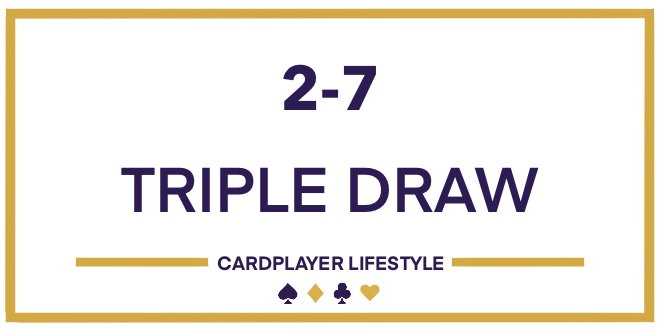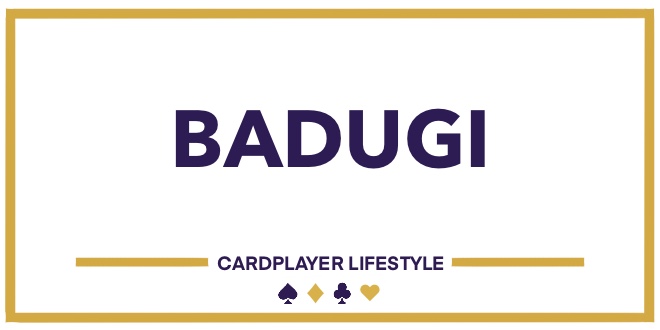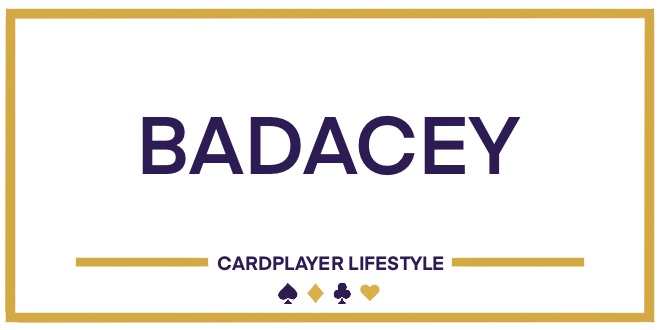As poker players, we were all likely introduced to card games of some form as kids — Go Fish, Crazy Eights, and Uno to name a few — and they all had something in common: there were no solvers available for them!
Kidding aside, one trait most kids card games do share is the fact that discarding and drawing play a big role. Several of the best poker games today share these traits as well.
“Got any 4’s?” “Nope, go fish!”
Got 4 cards to a wheel in 2-7 Triple Draw? Go fish!
Draw games are some of the most fun poker variants you’ll find in a mixed game, so let’s go through them and get you ready to relive the excitement of drawing from the ol’ Uno deck.
In this section of our Mixed Games Poker Guide, we’ll be covering the classic variants of 2-7 Triple Draw, A-5 Triple Draw, 5-Card Draw, and Badugi, as well as some variations that have evolved in the wider mixed games collective like Badacey, Badeucey, and Archie.
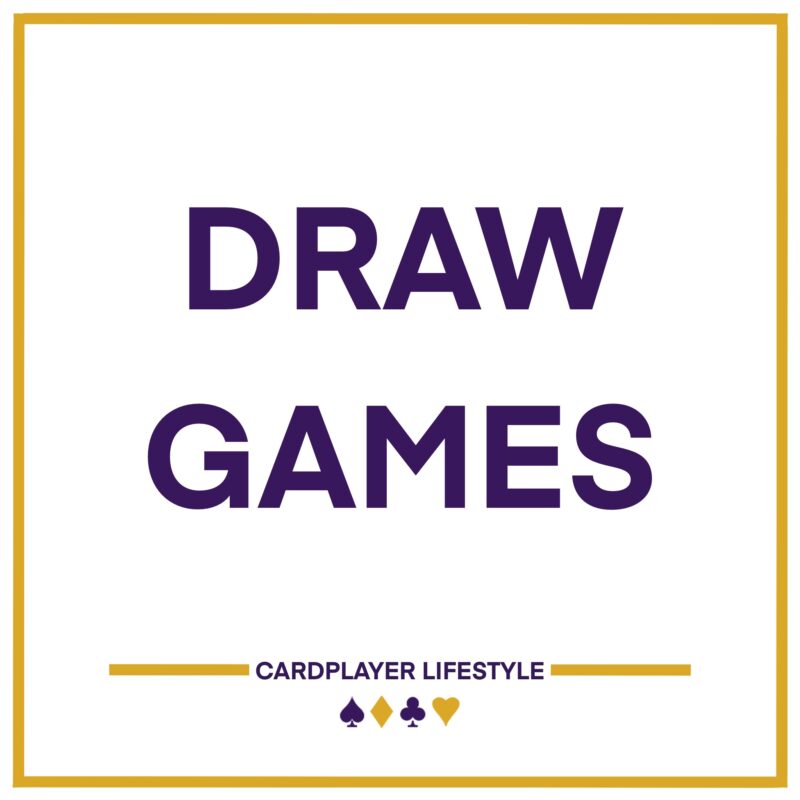
Also, be sure to check out our other Mixed Games Poker Guide articles on Flop Games and Stud Games.
Looking to play mixed game poker? Look no further than our recurring Mixed Game Festival live event series! Plus, you can run your very own mixed game at home with a set of mixed game plaques.
THE CLASSICS
Limit 2-7 Triple Draw
Let’s start with the most popular and common version of draw, and also one of the most popular games overall in a mix, as it is action packed and can play significantly bigger than other games in the rotation (especially when played as pot limit or in rare appearances no limit, but for our purposes here, we’ll focus on limit).
In 2-7 Triple Draw, the goal is to make the best five-card low hand without making a straight or flush (aces play high), so 23457 (known as a wheel or number 1) is the best possible hand.
Players are dealt five cards face-down with a button and two blinds in play. Pre-draw betting begins to the left of the blinds, as in flop games, where players can fold, call, or raise. At the completion of betting, players must then decide which of their cards to discard and subsequently draw new cards in hopes of improving their hand, beginning with the blinds.
Action continues with two more rounds of betting and drawing, followed by a final round of betting, with the lowest hand following the third draw declared the winner. At any point in the hand, a player can ‘stand pat’ and no longer draw if they feel their hand needs no further improvement (or if they wish to ‘snow’, or bluff).
As mentioned, this version of the game is played with a limit betting structure, so in a $10-20 game, the betting increments pre-draw and after the first draw are $10. After the second and third draw, they increase to $20.
Limit 2-7 Triple Draw Tip: Don’t leave home without a deuce
There is a lot of strategy involved in playing Triple Draw well, and many ways you can get in trouble in a hand. Check out the Learning Resources section of our Mixed Games Poker Guide for a deeper dive into this and all the mixed games we discuss.
As with all poker games, starting hand selection is a large part of playing Triple Draw well, and arguably the most important and powerful starting card to hold in any poker game is the deuce in 2-7 Triple Draw. Without it, you literally can not make one of the strongest possible hands. The best hand you can make is 86543, which is the 9th best possible hand. You can also run into more possibilities of making straights, and if you don’t have a deuce, your opponents likely do, which will make drawing to a deuce more difficult if that’s what you’re hoping to do.
If you are dealt a pat 8 to begin with, you should keep it and play it aggressively as opposed to breaking (discarding) and drawing to a 7, but if you don’t have that deuce when you are drawing, you’ll be making life more difficult than it should be.
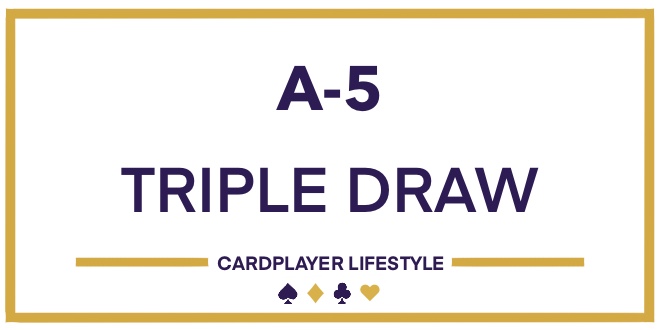
Limit A-5 Triple Draw
Though a much rarer variant in the realm of draw games, A-5 triple draw is nearly identical to its 2-7 cousin, with identical deal, betting and drawing structures. However, hand strengths are the key difference, as straights and flushes no longer count against you, so A2345 is now the best possible hand (hence the name).
As such, strategies change significantly with seemingly more possibilities to make hands, and one card (the deuce), not having the power it did when straights counted against you.
Limit A-5 Triple Draw Tip: Pat 8’s ain’t what they used to be
As mentioned earlier, in 2-7 Triple Draw, a pat 8 is a decently strong starting hand, and should be patted and played aggressively. However, in A-5, with a 7 no longer being the lowest possible made hand, the value of a pat 8 diminishes significantly. There are many more opportunities to break your hand and draw to improve.
For example, if you are dealt 8642A to start, you’re better off discarding the 8 and drawing to improve. You have three draws to catch a 3 or 5 to make a very strong 6, or you could catch a 7 to improve to a ‘pattable’ 7642A. Once you’ve made a 7, it’s usually best to pat it and play aggressively against opponents still drawing to force them to pay to outdraw you.
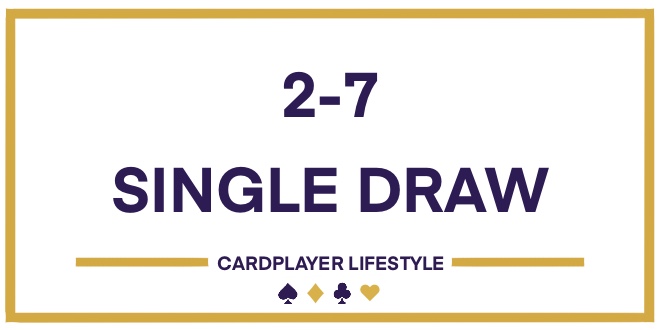
No Limit 2-7 Single Draw
No Limit 2-7 (a.k.a., “Kansas City Lowball”) is seen by many poker players as the most ‘true’ form of poker. A hand is dealt identically to the triple draw games above (straights and flushes count against you, too, as in 2-7 triple draw), but two big changes make the game drastically different, and they’re right there in the name of the game: No limit betting, and one draw.
With only two betting rounds (pre- and post-draw), the amount of information a player can gather from their opponent is very limited. You get information from their pre-draw action, the number of cards they draw, and their post-draw action. That’s it. Oh, and one more thing…
Live. Reads.
Hence why this variant is seen as such a pure form of poker. In the live version of the game, there may be no other variant where knowing your opponent and picking up a live tell is as important. Looking your opponent in the eye and determining whether they’ve got it or not is a big part of No Limit Deuce, and its why you’ll see the best players in the world succeeding at the game.
There are online games available, and they are fun (ultimately NL 2-7 is just a really fun game), but they’re just not the same without the live element of reading your opponent.
Don’t be afraid though if you’re reading skills aren’t among the elite. Bet sizing, timing tells, and pot odds all still huge elements of being a successful NL 2-7 player. And did I mention it’s a lot of fun?
No Limit 2-7 Single Draw Tip: A pat Jack is a favorite over any 1 card draw
When it comes to poker strategy, there is a lot to such a simple game. With only the one draw, hand strengths change drastically from triple draw games. Knowing your opponents and their hand ranges is key, but one rule stands above all others and it’s pretty simple: A pat Jack is a favorite over ANY 1 card draw.
The pat Jack is the line. No matter how strong your opponent is drawing, the fact that they’re drawing makes their hand inferior. If you have the roughest Jack possible (JT986), it’s still a favorite to win against even the strongest of one card draws.
Position is as always a huge positive, but in a situation where you may have played your made Jack aggressively and gone to the draw against an opponent who is out of position, you’ll know exactly what to do against them.
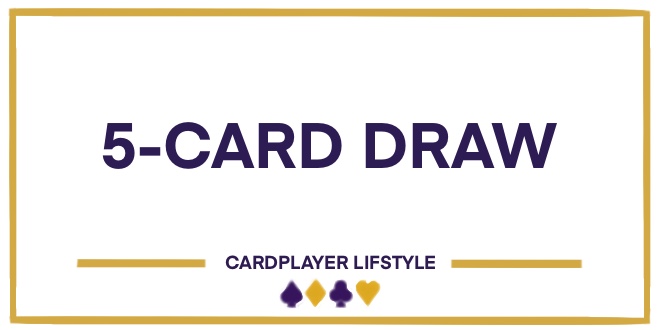
5-Card Draw
Prior to the poker boom, if there was a draw poker game you grew up playing, it was likely 5-Card Draw. Nowadays, the game is virtually impossible to find save for mixed cash games, WSOP Dealers Choice or Big Bet Mix events, and a spattering of online offerings.
Action is dealt identically to the above games, however in this game you want to make the best hand, using the standard rank of hands. 5-Card Draw can be played as a limit triple draw game, but is best and most commonly played as either a pot limit or no limit game with one draw.
5-Card Draw Tip: Know your draws
Deception is not as prominent a part of 5-Card Draw as it can be with other draw games, which is frankly a large part of its lack of popularity. It’s really a pretty simple game. Both your and your opponents pre-draw hand strength will be quite apparent to observant players, and as such, you’ll need to be observant to how both they and you draw.
A player drawing one card obviously has either two pair, four to the straight or flush, or in very rare cases, four-of-a-kind.
If drawing two, an opponent has either three-of-a-kind, a pair with a high card (not recommended – draw three when holding a pair for the best chance at making three-of-a-kind), or in some cases a two-card draw to a straight or flush (just don’t).
Three-card draws are almost always a pair unless a player in the blinds gets the opportunity to draw cheaply with two high cards.
Four- and five-card draws you should only see from the big blind. If you notice a player acting otherwise, don’t let them leave the game!
Badugi
Badugi is one of the most unique draw games and, as you’ll see shortly, the perfect addition to some of the exciting split-pot draw game variations coming up! It is played as a lowball game where the lowest four-card hand wins, but in this game, you also must try to make your hand unsuited (known as a Badugi), so A234 of all four suits is the best possible hand (straights do not count against you but flushes obviously do).
The game is dealt similarly to the above games, with a button and two blinds, but players are dealt only four cards face-down before any of the drawing rounds. Badugi is played as a triple draw game, but can be played limit, pot limit or no limit, with limit and pot limit the most common.
As with the other triple draw games, there is a round of betting before the first draw and after each of the three draws, before a winner is declared at showdown unless all other players fold.
The goal is ultimately to make a Badugi (any Badugi, even KQJT beats an incomplete Badugi), but in many cases that doesn’t happen, in which case the lowest three-card incomplete Badugi hand wins at showdown. For example, Ah2d3s3d would be the nut 3-card Badugi (the 3d does not play), and beats any other incomplete hand, which leads us to our strategy tip…
Badugi Tip: Start from the bottom and work your way up
As it is not a given that you’ll make a Badugi once the three draws have been completed, having the potential of a superior three-card hand as a backup versus an opponent also drawing is key.
For example, if your opponent starts with Td 2s Ah 6h, the lowest possible Badugi they can make on one draw is a 10, if they discard the 6h. Conceivably they could draw a low club, say 4c and have the option to break the 10 and draw to the 4 (if there are more draws to come), but Badugis are hard to make, so it’s better to just make a good one in the first place by starting with multiple low cards, than be starting by trying to make a bad or marginal Badugi.
If you start with say 5c 4h 2d Kd, sure you could draw the Ks giving you a bad Badugi, but you’re also live to multiple low spades that could give you a nearly unbeatable Badugi.
Also, playing in position is huge in Badugi. If you do make an ugly Badugi, at least you have the option in position to pat it if your opponent draws in front of you, knowing that at least it is ahead. If you’re out of position with a marginal Badugi, you’ll be hard pressed to know if it’s good vs. a late position opponent patting.
THE VARIANTS
Badacey / Badeucey
What’s better than playing a draw game? Playing two of them simultaneously in a split-pot game! Badacey and Badeucey are a little tough to find if you’re not near a casino that spreads a regular mixed game, as there are no online offerings of it, but if you can find one, jump in and make sure the Badacey and Baduecey plaques are in the mix because they’re both great games, with a lot of similarities, but enough differences to give each its individual flair.
Both are spread as 5-card triple draw games, usually limit, and usually capped at 6-handed because of the number of cards in play and discarded.
The key differences are that Badacey is played as a Badugi / A-5 split, while Baduecey is a Badugi / 2-7 split. Strategies vary accordingly as, along with the best 4-card Badugi hand, players will be trying to also make the best 5-card A-5 or 2-7 hand to scoop both halves of the pot. In Badacey, since straights do not count against you with A-5 rules, a standard A234 Badugi would be the best possible. However, in Baduecey, aces play high and straights count against you as with 2-7 rules, so 2345 would be the best possible Badugi.
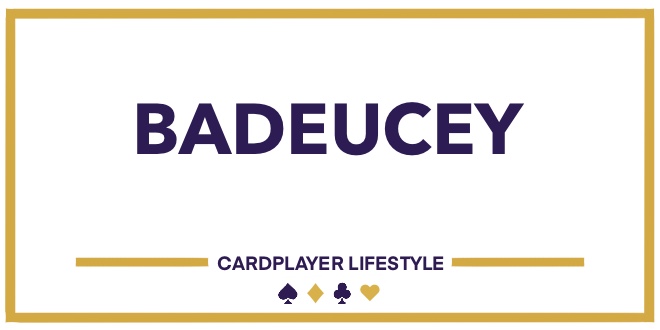
Badacey / Baduecey Tip: How low should you go?
Let’s start with what you should look for in a Badugi hand. As we discussed in our Badugi section above, it’s better to start as low as possible when drawing to a Badugi. This is doubly important in these games as, since you will be dealt five cards instead of four, a quality Badugi will be easier to make. Therefore it is critical if you aim to scoop both sides of the pot that you take advantage of this fact, and start with at least three low cards that can make both a premium Badugi hand AND a A-5 or 2-7 hand. Start with the basis for a good Badugi that can also easily improve to at least a decent lowball hand as well, whether it’s A-5 or 2-7.
As for how low you should go? A decent guideline is to aim for a 7 Badugi and a 7 low A-5 hand in Badacey. In Baduecey, you can try to go a little higher aiming for a 7 or 8 Badugi, with an 8 low 2-7 being strong. That said, depending on how your opponents play, you can loosen these standards if you see them regularly showing down higher hands than these.
Bonus Tip: Hammer your dealt pat hands or keep it super friendly
Sometimes you will be dealt an extremely strong one-way hand that is the virtual nuts for half the pot but needs improvement for the other half (e.g., 7h5h4h3h2c in Baduecey. You have a wheel which can not be beat, but only two usable Badugi cards). In these cases, pat your hand and either: A) Do your best to thin the field to scoop by forcing your opponents all to fold, or B) in a super loose splashy game, build the pot as best you can while freerolling multiple opponents to showdown, and make a decent profit from your half of the pot. On rare occasions you may get quartered if an opponent also makes a wheel, but quarterings are far less frequent in these games than in Omaha 8 or Better.
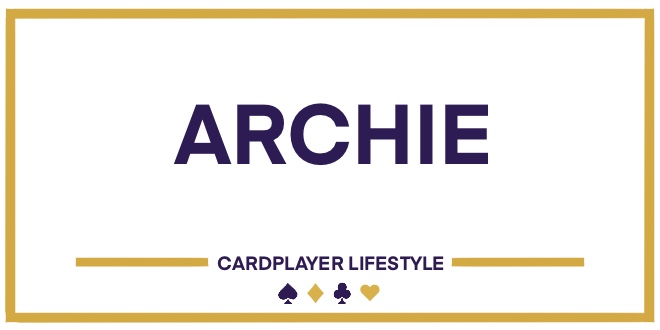
Archie
Archie is one of the rarest and most complex draw games, though it has grown in popularity on the Las Vegas mixed game scene for just that reason. It’s a lot of fun, but it can be a complex game with a lot of nuance and definitely favors more experienced mixed game players. So, if you’re new to this game, be careful as there can be a lot of seemingly enticing situations that can get you in trouble.
Archie is basically 5-card triple draw high/low split with qualifiers. Half the pot goes to the highest hand, half goes to the lowest A-5 hand. Of note, you must qualify your hand to be eligible for any part of the pot. For a qualifying low hand, you must make an 8 low or better. For a qualifying high hand, you must make either a pair of 6’s or a pair of 9’s (rules vary from room to room).
If there is no qualifying low hand at showdown, the entire pot is awarded to the highest hand. If there is no qualifying high hand, the pot is scooped by the lowest hand.
Quite often the pot will be split, as players will often be dealt strong one-way hands or draws and play solely for that half of the pot in a multiway situation. As with any split pot game though, our goal is to scoop the whole pot yourself! It will be tough to do that, but here’s a tip on how to do just that!
Archie Tip: Low hands with high potential are premiums for a scoop, or at least a strong chance at half
Barring a rare occasion where you are just dealt the nuts both ways, you’ll likely need to improve in some aspect to scoop a pot. Four low straight cards or four low suited cards are the premiums in this aspect.
If you are dealt 2356J, for example, you’ll be discarding the Jack and drawing one with plenty of opportunity to make either a strong low with an ace, 7 or 8 (which will likely win you half the pot), or there are those four 4’s out there that could scoop you the entire pot.
Four low suited cards are a similarly huge starter with possibilities to make a strong high (with a 9 or higher flush) a strong low (with an offsuit non-pairing card that gives you five cards 8 or lower), or a potential scooper (with a fifth flush card 8 or lower).
As mentioned in the Badacey /Baduecey section above, once you’ve made a hand, it’s up to you to determine whether you want to protect your hand and/or fold out opponents by raising aggressively, or building the pot by keeping others in if you’re resigned to playing for half.
Remember when you were a kid and all you wanted to eat was pizza (or burgers, or hot dogs, or candy, or whatever your favorite food was) and your parents said “NO!”?
Pizza’s great and all, as is No Limit Hold ‘em, but remember also how your parents encouraged you to try new foods?
Well, we’re here to be your “poker parent” and encourage you to try something new, like Brussels sprouts (sorry Limit Hold ‘em, that’s you).
Mixed games are the smorgasbord of poker, with a variety of recipes and tastes. Some are sweet, some are salty (or will make you a bit salty), but ultimately, they’re a whole new exciting world of flavors beyond the same old pizza, and it’s a ton of fun to discover them!
Please don’t be the kid who said they didn’t like something without even trying it. Be the kid who tried a spoonful of something and was pleasantly surprised by what they’d just tasted and discovered a new favorite food.
In this overview article, we’re going to give you a few spoonfuls of info and strategy about a wide variety of mixed games. Most importantly though, we’re going to give you a ton of reasons why you should give them a try (with far fewer food references). If you’re looking to dive in even deeper, then we recommend signing up with one of the best poker training sites.

Also, be sure to check out the other three parts of this Mixed Games Poker Guide on Flop Games, Stud Games and Draw Games.
The Recipe (why mixed games are great)
As longtime lovers of mixed games, we can think of a plethora of reasons why they’re great. At the end of the day, you just need to experience a proper one for yourself, like the ones that’ll be running at an upcoming Cardplayer Lifestyle Mixed Game Festival. In the meantime, we’ve thought of eight great reasons why you’ll enjoy mixed games.
Friendly, welcoming players
The main reason we’ve heard players mention as to why they’re hesitant to try mixed games is the fear of looking foolish to other players because they may not know the games as well. From our experience, this is almost universally an unjustified fear. Players in mixed games are among the most welcoming and encouraging players in poker. If you tell them that you’re new to mixed games, they’re far more likely to welcome you and help you learn the game than to take advantage of your inexperience. The more people playing mixed games, the better it is for everyone, so it naturally lends itself to a supremely welcoming atmosphere.
Notably, the friendliness holds true for both low and high stakes games, though we recommend you start our on the lower rungs of the ladder to better get acquainted with all the different poker variants.
It’s a great change of pace
They say variety is the spice of life, and we passionately believe that holds true with poker. If you’re getting fatigued by playing just No Limit Hold ‘em, mixing it up with something new is a great way to recharge the poker batteries. NLHE can still be your bread and butter, but learning a new game (or two, or eight, or 20…) can be just what the doctor ordered to prevent poker burnout.
You may discover a new favorite
If you’ve never played before and get a taste of a variety of new games, you may just discover one or two that you love and want to learn more about and play more often!
Many players who first explore beyond Hold ‘em tend to dabble in Omaha 8 or Better and the stud variants in a HORSE rotation (Hold ‘em, Omaha 8, Razz, Stud, and Stud 8 or Better). Perhaps at that point you’ll be ready to dip your toes into draw games for the first time, such as the very popular 2-7 Triple Draw or more niche Badugi variants. With so many games to choose from, we’re willing to wager that Hold’em won’t be your favorite for too much longer.
It’s tough to really go broke
With most of the games in a dealer’s choice mix being limit structure or capped in big bet games, it’s tough to really get wrecked in a game like you can in a rough session of No Limit Hold em or Pot Limit Omaha (which is played with a cap in a mixed cash game).
If you’re just breaking into mixed games, yes there will be a learning curve. However, if you do a bit of homework beforehand you’ll be more likely to be competitive. Even on days when you “pay for experience” in a session, the hit will be much less painful to your bankroll (provided you learn at stakes you’re comfortable with).
Moreover, on a hand-to-hand basis, without really big bets relative to the pot as an option, the sting of flicking in a tough call is significantly less pressure-filled, which lends itself to less overall stress among the players, in turn leading to a more positive atmosphere at the table.
This relaxed vibe also leads to another great feature of mixed games…
No tanking!
Again, with limit or capped betting, those big decisions that warrant a really deep think are just so few and far between in a mixed game setting. Sure, there will be spots where players have a tough decision to make and put in some thought, but there is virtually never an occasion (especially in the limit games), where a player takes significant time to flick in a call or muck their cards.
Chips fly, decisions get made, and play moves much more quickly in mixed games, which is another major reason why players tend to generally be much happier and easygoing at a mixed game table.
Mixed games will help your No Limit Hold ‘em game
Whether it’s No Limit Hold ‘em, Pot Limit Omaha, 2-7 Triple Draw, 7-Card Stud, or even Razzdugi, they all fall under the umbrella of ‘poker’. There are general theories that apply to all, and there are nuances in different games that can help you with your No Limit Hold ‘em game. For instance:
- You’ll think about pot odds in a different way in a bunch of limit games.
- You’ll think more about blockers in PLO.
- You’ll closely contemplate bet sizing in No Limit 2-7 single draw.
- You’ll have a new perspective on how badly you can run when you start with A234 in Razz, then get dealt three face cards the rest of the way!
Seeing poker in a different way, with some familiarities, will refresh your mind when you sit back down in your regular game. On the flip side, playing games that require completely new strategic considerations accomplish the same goal. Getting out of your comfort zone a bit and trying to figure out the best way to scoop an Archie pot will make what you already know about No Limit Hold ‘em seem simpler and more comfortable.
Bottom line, test driving a few new vehicles will increase your confidence with the “Cadillac of poker”.
You can spice up your home game
Introducing mixed games into your home game presents huge benefits, and there’s no better way to do that than with your very own set of Mixed Game Plaques.
If you want to try mixed games in the most comfortable environment possible, what better setting than with your group of friends at stakes you set? You can learn the games together or, once you personally become familiar with mixed games, you can spread the good word and introduce your friends to your new favorite poker variants.
Admittedly, it may be a bit of a challenge. My friends in my own home game were a bit tough to crack, as they wanted the familiarity of hanging out and playing NLHE sit and go’s. So, what I did along with that was suggest that for an hour I’d introduce two or three games to them, dealing and teaching, but not actually playing, so they wouldn’t be afraid of losing to me since I knew how to play them.
CLICK HERE TO ORDER YOUR MIXED GAME PLAQUES
Within a couple of evenings, dealer’s choice cash games became a prominent part of my home game, as each player could pick their favorite game to put in the mix (which is a regular practice in casino-dealt mixed games as well).
It’s just plain fun
There are many reasons to give mixed games a try, but above all they’re just straight up fun.
The combination of the elements listed above form the recipe for a great time at a poker table. The most fun times I’ve had playing poker can all be pointed toward sessions of mixed games, whether it’s playing with old friends or making new friends.
A legendary night of $4/8 mix at the old Monte Carlo, and a night at the Westgate full of mixed games, massage bomb pots, and other shenanigans in Las Vegas still stand head and shoulders above all others when it comes to the best times I’ve had at a poker table.
And I lost both nights.
So, are you ready? Or at least curious yet? Let’s get you set and take a peek at what you’re in for.
What’s On the Menu (the many different games)
Flop games (Pot Limit Omaha, Omaha 8 or Better, PLO 8, Limit Omaha, Double Board Omaha, Big O, Short Deck, Courchevel, Drawmaha, S.H.O.P.)
These are the games that are dealt similarly to Hold ‘em. Players receive hole cards, there are blinds and/or antes, and a flop of community cards is dealt. These are games that will be most immediately familiar to Hold ‘em players, but there are many distinct differences.
Stud games (7-Card Stud, Razz, 7-Card Stud 8 or Better, Stud high/low No Qualifier, Super Stud 8 or Better, Razzdugi)
Each player in these games receives their own individual hand of (in most cases) seven cards. There is no flop of community cards. Players will play their own boards vs. their opponents, which will have a combination of hole and exposed cards.
Draw games (2-7 Triple Draw, A-5 Triple Draw, No Limit 2-7 Single Draw, 5-Card Draw, Badugi, Badacey, Baduecey, Archie)
Once again, there are no flops or community cards with these games. Rather, the main feature of these games is that on betting rounds, players have the option to discard from their hand and draw fresh cards in their attempt to make the best (or worst) hand.
The Cookbooks (study resources)
So where to start? You can either dive right in and find a live or online game (more on those in a bit), but if you want to get your feet wet with some study before you take the plunge, here are some outstanding resources to learn from.
Books
Mastering Mixed Games – Dylan Linde
If we could only recommend one resource for both beginners to mixed games and existing players looking to improve, it is Dylan Linde’s outstanding book. Linde provides both basic and advanced strategies for all games, including some of the more obscure ones you may only find in a live setting (Badeucey, Badacey). For under $40, The amount of information provided is invaluable. You can read our review of the book here.
A Poker Player’s Guide to Mixed Games – Ken Lo
This 2014 book may have flown under the radar, but it’s still available and an outstanding resource for both beginners and experienced players alike. It is incredibly thorough, going through the basics of each game before diving into deeper strategy. It’s a beefy book at almost 700 pages, but don’t let the size scare you. It’s well worth the read, and a great value also at under $40.
Super System 2 – Doyle Brunson + multiple authors
This book has multiple great chapters on mixed games. The original Super System does as well, but the information is now quite dated, while SS2 was written by more contemporary players (in 2005), such as Daniel Negreanu, Jennifer Harman and Todd Brunson, and still holds up very well. Their sections (Negreanu on 2-7 Triple Draw, Harman on Limit Hold ‘em, and Brunson on Stud 8 or better) we can still highly recommend.
Finding a material copy of SS2 can be a bit difficult, but the Kindle version is available on Amazon for under $10.
Seven Card Stud for Advanced Players – David Sklansky, Mason Malmuth, Ray Zee
High-Low Split Poker for Advanced Players – Ray Zee
These books fall solidly into the ‘classic’ category, as they were written in the 90s when Stud was as prominent if not more so than Hold ‘em.
As “for advanced players” is right in the title, we wouldn’t necessarily recommend these books as the first you read on Stud, Stud 8 and Omaha 8, but if you want to dig deeper and more thoroughly into these games, they’re definitely worth a look, and can by found through Amazon for under $40 each.
Online Training / Videos
Daniel Negreanu’s YouTube Mixed game series
Available at a cost of ZERO to your bankroll is Daniel Negreanu’s YouTube channel!
Specifically, Negreanu put together a series of short videos ideal for beginners to mixed games outlining rules and basic strategies for Limit Hold ‘em, Pot Limit Omaha, Omaha 8 or Better, Stud, Razz, Stud 8 or Better and 2-7 Triple Draw.
They’re a great starting point that will provide players with some solid fundamentals for the key games in an 8-game mix.
Run It Up WCOOP review with Jason Somerville and Daniel Negreanu
Kid Poker is part of another great free resource we highly recommend. In 2016, JCarver and DNegs sat down for a 4-hour video breakdown of Daniel’s WCOOP HORSE win.
It’s awesome to hear Negreanu go through his thought processes on the final table together with Somerville, and there are really no other places to get such a high level breakdown of mixed game hands in a hand history review format. It’s an entertaining and highly educational resource for those with even a fundamental knowledge of mixed games.
Twitch streams
Twitch has become a hugely popular source of poker entertainment, and learning. While the biggest streamers are generally No Limit Hold ‘em players, there are some streamers on the platform whose main focus is playing and growing mixed games. At the top of the list is PokerStars Team Pro and founder of the ‘Mixed Game Movement’ Mason Pye (pyefacepoker). Pye recently won his first SCOOP title in 7-Card Stud and can regularly be found crushing the low- to mid-stakes mixed games on PokerStars.
ACR Stormer Scott Kenyon (Pokerbrahs) can also be found crushing the online mixed game streets, especially during the big series like WCOOP and SCOOP. A long-time mixed gamer, his live credentials include an EPT London 8-game title in 2011 for over $50,000.
Upswing Poker’s Mixed Game Mastery course
This option is at the pricier end of the spectrum, at $999, but it’s incredibly comprehensive and features 102 videos from highly successful mixed game player Jake Abdalla. The course focuses primarily on Stud, Stud 8, Razz, Omaha 8, and 2-7 Triple Draw. You can read our review here.
That’s not the full gamut of mixed games, of course, but with 102 videos covering just those games, you’ll be provided more than enough information to be able to crush those poker variants and thus be able to treat the high price tag as an investment rather than an expense.
Run It Once Training
There’s tons of mixed game poker content available within the suite of videos produced by Run It Once Training. Given over by instructors like Brian Hastings and Dan “Jungleman” Cates, you know you’re being taught great lessons by players who’ve gotten to the top by implementing them. Jonathan Coffman surveyed RIO’s extensive mixed game content library and broke down some of the best videos in this article, which you should be sure to check out.
Dig In! (where to play)
So, you’re finally ready to play some poker variants with more than two cards in your hand. Congrats, and welcome to the wonderful world affectionately known as “banana games”!
Here’s a look at where to jump into the mixed game streets.
Live games
Mixed games are more popular in some areas than others, so check the Bravo Poker or Poker Atlas mobile apps, or call your local casino or poker room to see what’s available in your region.
One area that will always have regular mixed games of various stakes running is Las Vegas, especially during the World Series of Poker. Games do run year-round, but during the WSOP the offerings expand vastly!
The WSOP has added a $250 H.O.R.S.E. tournament into their Daily Deepstacks weekly rotation to go along with the various mixed game bracelet events they stage.
The Orleans is a great spot for low-stakes cash and tournament mixed games year round, but during the WSOP they can be counted on for a great low-stakes tournament series with decent sized fields and prize pools for a small buy-in.
The Golden Nugget’s Grand Series is a fantastic spot for mixed game players as well, with a schedule generally echoing that of the WSOP, but for buy-ins roughly a tenth of the size.
Finally, during the WSOP the mixed game cash game streets tend to run wild at all stakes. You know those aforementioned legendary nights? Get ready to experience them firsthand at the next Cardplayer Lifestyle Mixed Game Festival, hosted by this site’s founder Robbie Strazynski. You won’t be sorry!
Online games
If you’re fortunate enough to live in a location with legal online poker, you have an outstanding resource to hone your mixed game chops.
PokerStars runs a full array of regularly scheduled daily mixed game tournaments with buy-ins as low as $1, and cash games with stakes as low as 1 cent / 2 cent, along with a full offering of play money games.
Other sites like GG Poker, partypoker and 888poker have more limited offerings including PLO, PLO8, Short Deck, Stud and Stud 8. PLO and Short Deck games will be largely available, but the others are tougher to find, with your best options being PLO8 tournaments on partypoker.
Rec Poker PokerStars Home Games
The crew at RecPoker are a great bunch of people, dedicated to growing poker for recreational players. They run a monthly mixed game tournament series with a leaderboard and player of the year award. To prepare for the monthly mixed game, each Saturday they’ll run a warmup game of whichever the game of the month is.
It’s a great way to play and learn with a group of friendly folks, and as it’s a free home game, can be played from anywhere in the world.
Final note: Be nice to the dealers!
You should always make the extra effort to be nice to the dealers when playing in mixed games. Dealer knowledge of mixed games can be limited depending on the venue. Please consider that a lot of dealers are unfamiliar with many games. Be patient and considerate with them and provide as much help as they need. You’ll see that with a little help, dealers will pick up the new games quite quickly. Lastly, of course, be sure to tip well and tip often!
The game of poker is a miniature version – a microcosm – of life. We face all sorts of challenges during our lives, complicated by uncertainties and risks, and promises and rewards. They all have their counterparts in the game of poker. There are strong similarities, and here are seven of the most striking.
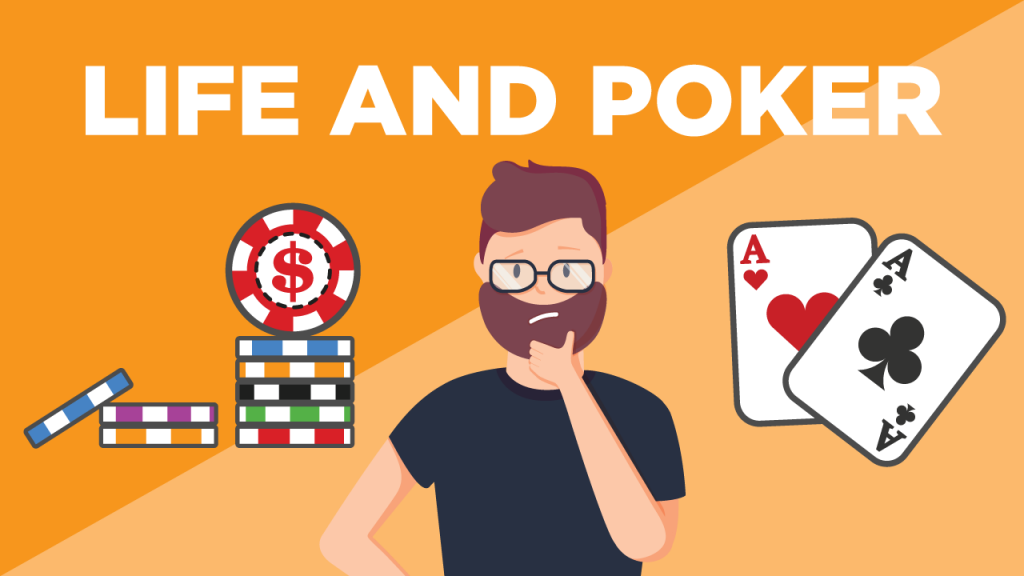
Gambling
In life, when the rewards outweigh the risks, you are bound to succeed in the long run. That’s what the three laws of probability are all about. Likewise, in poker, with a drawing hand, whenever the pot odds are higher than the card odds against making your hand, you are favored to win that pot. Otherwise, you are gambling – and bound to be a loser in the long run.
Skill vs. Chance (Luck)
In poker, as in life, there are almost constant decisions to be made. If you have the skills to make the wisest decisions, you are bound to come out ahead for the most part. Trusting to luck – as in gambling, makes you an underdog. Interestingly, the skill vs. luck issue is something that was hotly debated among officials when determining legal gambling regulations in Pennsylvania and other states.
Return-on-Investment for a Positive Expectation
You have a Positive Expectation when your investment (bet) earns a profit over the long run. That is essential to success in both life and poker.
life is just one long poker game. We’re all just trying to make positive EV plays while occasionally bluffing
— Froste 💯 (@Froste) July 21, 2020
Education for greater skills
In both poker and life, you have some control over your education. Learn what you can to best develop your skills – be it in the office where you work or at the poker table. One great place to start is at some of the best poker training sites.
Starting hand selection
In playing poker, the most critical decision is selecting the starting hands before investing your precious chips in the pot. Most players are anxious to get involved – too anxious. As a result, they are prone to play weak hands which generally lead to losing their chips. The smart player, the well-skilled player, is more discerning and cautious. To be best prepared, you can use the Hold’em Algorithm or available charts to facilitate and make your best decision. Losers depend more on luck. So it is in life: wisely invest your time and money.
Grow your winnings
Playing poker, you can build the size of the pots you win. It takes skill to do so. Toward that end, there are tactics you can use – slow-play, check-and-raise, and bet for value, among others. In a similar manner, you can find ways to outdo your competition as you build your career – get that promotion and salary increase or earn a bonus. Be prepared and plan ahead. Seek favorable opportunities.
Know your competition
Study your competition be it in life or at the poker table. Observe the types of players you are up against – tight, loose, passive, aggressive or deceptive. Learn to read their hands and their tells. Then you can make the wisest decisions in your favor. In life, your career success may depend on it.
Indeed, the game of poker is a microcosm of life. Be a winner at both for a happier life.
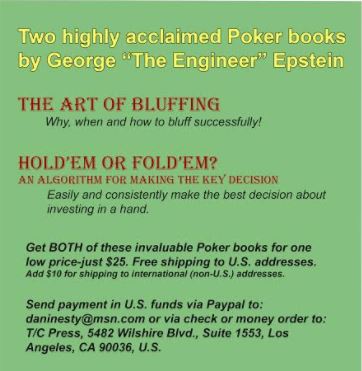
Poker fans the world over love talking about their favorite players and making claims about who the best of the bunch is. While there are numerous ways to compare and contrast the skills and successes of poker greats, one traditional measure is the Hendon Mob All-Time Money List.
Poker is, at its core, about winning money from other players, it stands to reason that the players who have won the most money ought to be considered among the best. Indeed, there’s no arguing that those currently sitting atop the all-time poker money list are amongst the best players in the game. But is the All-Time Money List really a fair barometer of success?
It’s time we look at both sides of the argument.
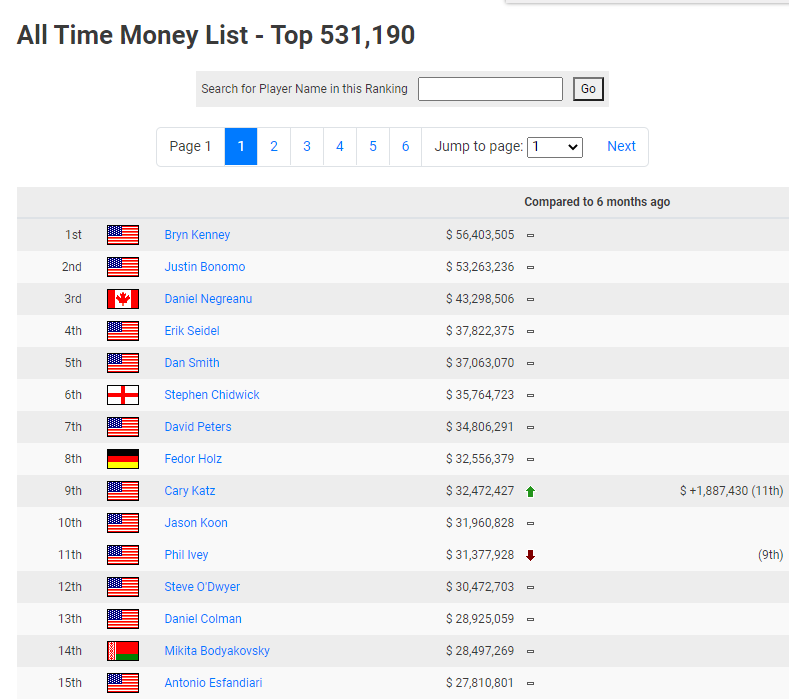
The Case Against the List
The Hendon Mob’s All-Time Money List has, for many years, been the definitive list of the richest players in poker, but since the list itself only details the fortunes of those taking part in ranking poker tournaments, many games aren’t part of the qualifying process.
From cash games to unregistered private events (but obviously excluding winnings on trusted video poker sites), there are going to be some results that either slip through the net or don’t qualify. Is the best tournament player guaranteed to be the best cash game player too? Of course not.
Tournament poker also offers a lot of variance. We’re not talking about the all-time crushers, but tournament luck compared to cash game luck decrees that plenty of people on the All-Time Money List have gotten lucky in order to be as high as they are. We’re talking about tournament poker, but in general, that’s in hold’em, too. Mixed games haven’t made up nearly as much of the action as other tournaments have. While a propensity to crush souls at NLHE is impressive, it’s not exclusive proof of greatness.
Finally, wearing our ‘Against’ hat, we’d also argue that the results on the All-Time Money List don’t represent the true value of what players actually won and we’re not even going into the recent trend of high rollers and super high rollers feathering the nests of some of the big birds in a way the past didn’t allow. Frequently, a player’s results are so skewed because a player has either sold pieces of action or been outright staked by other players or coaches. Does the All-Time Money List represent an accurate list of the true winners and losers? If you believe that, I have a triple-barrel bluff with your name on it.
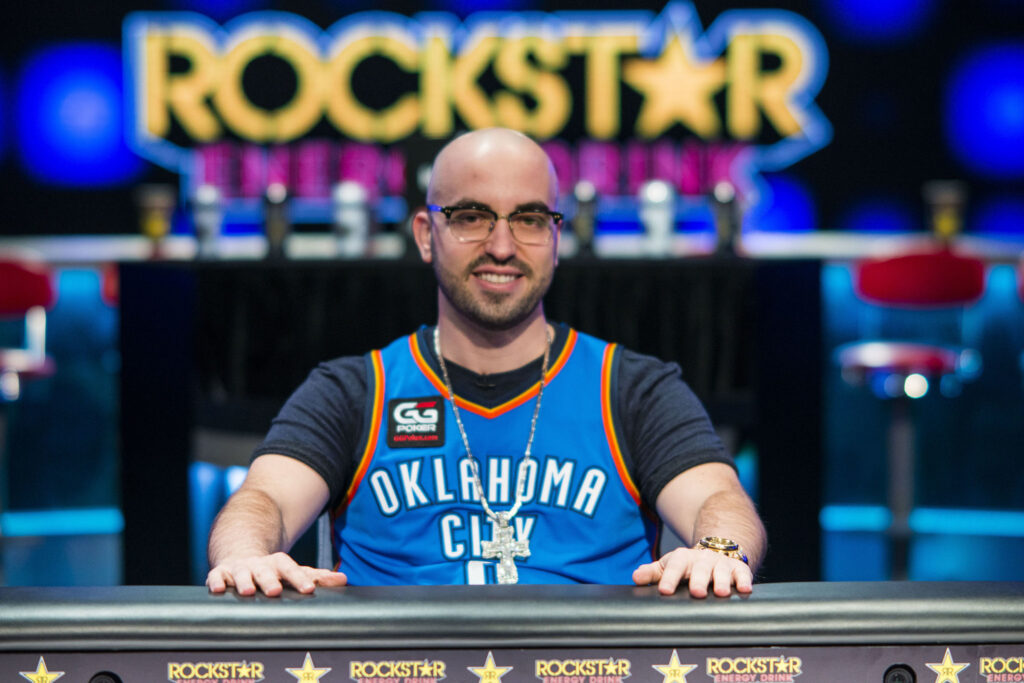
Bryn Kenney | Image credit: World Poker Tour
The Case For the List
While there are many arguments against the list, its sheer endurance has to be a factor that is in its favor. The All-Time Money List dates back to the most formative period of poker, and since the Moneymaker Effect changed the game we all love, the All-Time Money List has been there for us as a barometer of brilliance.
People love comparing who has won more at the top level of poker, so how else would that be done without the miracle of the All-time Money List? Such real-time information would be almost impossible to correlate if you started doing it afresh. Plus, how on Earth would anyone else have the contacts around the world to make it happen?
We debate the merits of players based on their spot on the list, their activity, their success in different countries and buy-in levels. The only way we can do that is by using the All-Time Money List.
The lifetime tournament earnings of a player — only available through ranking events available to research on the All-Time Money List — are a great gauge as to the merits of that player. Even with a smaller sample size of younger players such as Landon Tice or David Coleman, all the information is there, from how many opponents they faced to who cashed and where.
Sure, some poker players near the top of the all-time earnings list have only won a big tournament or two, but those types are few and far between. When we look at the top 10 poker players on the All-Time Money List, it’s a ‘Who’s Who’ of poker.
The Verdict
There are many niggles to be had with such a wide-ranging inventory as the All-Time Money List, but the length of time it has been present, coupled with the general regard given to it by players and fans alike mean it’s impossible not to love it.
Could the All-Time Money List be improved? Of course. But it is a testament to exactly how vital it is to all of us that we would still much rather have it to call on than not.
It might just be time to get that new flag we’ve been craving.
From July 2019 until April 2020 I worked in underground poker games all over Los Angeles. I met many colorful characters and saw some unbelievable things as I rose from dealing $1/$2 NLH to $10/$25 PLO. The names of those involved have been changed to protect identities.
Stepping off the plane into LAX was one of the most exciting moments of my life. At 23 years of age and only a week removed from graduating college, I was ready to “make it” in America’s most glamorous city. My girlfriend was waiting for me, as she had already been living there for nine months, patiently waiting for me to finish school. The reunion was special, saying goodbye to my parents was emotional, and being in a new city was inspiring.
There was only one problem: money. I had spent my last semester casually applying to jobs in LA, but soon realized that LA-based companies had never heard of Quinnipiac University, the small Connecticut school I graduated from. I spent most of college in my University’s theater program, acting, directing, and writing plays. I loved theater, but I was one of the few theater graduates in LA who wasn’t pursuing the arts. My other major being Economics, I was more focused on the financial sector and landing a stable 9-5. Unfortunately I didn’t really stack up well enough against the UCLA grads, so the job hunt was not going as I’d hoped.
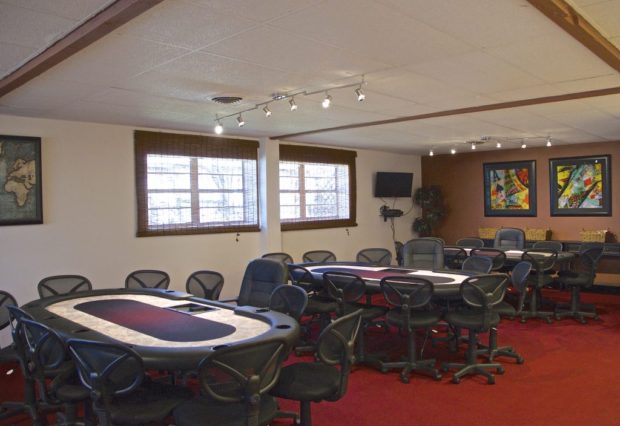
Image for illustrative purposes only
At this time, poker was my true love. I had been playing $1/2 No Limit Hold’em for about two years and had just recently gone from a losing player to about breakeven. In between job applications, I visited the local casinos, played a bit at online casinos like FruityKing, and played online poker in a private app club. That’s what it hit me; my club agent (we’ll call him Eric) said he is from LA. On a whim, I texted and asked if there were any live poker games that night. There just-so-happened to be one.
That night I hopped in my car, left the valley, and headed for the La Brea area. I pulled into a large apartment complex and made my way to the building I was instructed to go to. After stepping in the elevator and hitting floor 12, I suddenly remembered I have no idea what I would be walking into. As a precaution I took $400 out of the $500 I brought and shoved it into my sock. I figured if I’d be getting robbed, I could play it off that I only came with $100. With my heart pounding, I stepped out of the elevator and immediately heard chips shuffling and people chatting. I walked towards the sound and opened the door of what would become my office for the next few months.
I certainly was not getting robbed. There was a casino-grade table, plastic cards, solid custom chips, and a nice view of the city. I was thrilled. After removing my hidden sock money, I met with Eric and his partner, Dean. Both were young, around 22 years old. I was 24 at the time, so there wasn’t much of a difference. I looked around the room and noticed the player pool mainly consisted of 19- to 25-year-olds. Most of the players were in college at one of the many local choices. The game was soft, with plenty of action for a $1/2 table. My $300 buy-in quickly climbed to about $550 and I hovered around there for the rest of the evening.
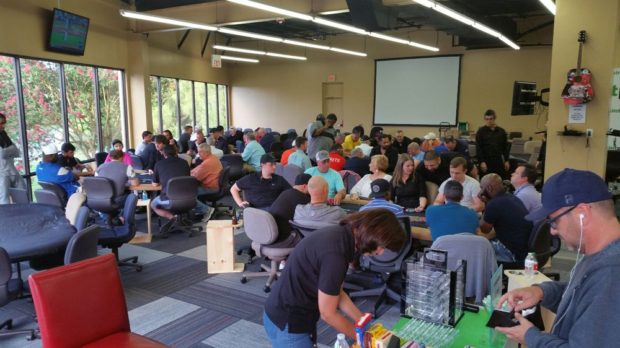
Image for illustrative purposes only
As I would often do, I closed the game out. Around 4am the final four of us decided to break. I cashed out my ~$500 and stayed to chat with the game runners. I couldn’t help but notice throughout the night that the dealer was struggling. She was a very attractive college girl who was incredibly nice and a little flirty with some of the players, but it was clear she wasn’t there for her dealing prowess. I mentioned to the game runners that I used to deal a home game on the East Coast, hoping it would lead to some opportunity.
That was a lie. Well not a lie, more of a semi-bluff. It is true that I used to deal, but it was pass-the-deck home games with my friends. So while yes I had dealt cards before, I certainly was not a poker dealer.
Luckily, I was given a chance.
The next day I went back to the same apartment ready to get in the box. The game runners gave me a breakdown of the rake, which was absurdly high, and I got right to it. I was to split time with the young lady who also dealt there. I thought she wasn’t a very good dealer… that was until I got in the box. My shuffle was fine, my pitch was horrendous, and at one point I had three misdeals in a row. It was pretty evident to the game runners that I hadn’t ever really dealt a game. But I had two things the other dealer couldn’t bring to the table: poker knowledge and stamina.

I am, and always have been, a poker fanatic. I can recite hands from old High Stakes Poker episodes by heart, tell you a funny story about a poker pro, know every hand nickname there is, and most importantly I knew the rule book to a tee. Home games can get out of control a bit, and I used my knowledge as a means to control the table. I could keep the action moving and settle any disputes immediately. While my mechanics were god awful, I had the presence of a seasoned veteran. Also, home games can run for anywhere from 6 to 24 hours so it is important to be able to deal long stretches. I was supposed to split time with the other dealer, but she constantly wanted breaks or needed to step out for a phone call, while I was locked into the game. She ended up leaving early that night and I dealt the last three hours myself.
I ended up making somewhere around $130 for the evening. Pay was 100% tips and the players were fairly generous. To me, $130 to sit at a card table was perfect. I got to see poker hands play out, try to put players on a range and play it in my head, talk with the players about sports, movies, gambling; it was a dream come true.

I stayed back and talked to Dean, Eric, and another player there, Peter. Peter talked all night about his $1/2 game. He said it ran twice a week at the same apartment. I learned a few things about home games that night. First, the apartment we were in was not used as a residence. It was rented out to game runners for a flat fee per night and the rooms were rented out to travelers and gamblers for short-term rentals. Second, hosting a game and running a game are very different.
Turns out Dean and Eric didn’t run a game, they just happened to host those two games I was at. Peter on the other hand had been running a game twice a week every week for the last year. Surprisingly, he was only 21 years old, but he ran a quite successful game. Dean and Eric made their money by being agents for private clubs on one of the poker apps, and decided on a whim to start hosting some live games.
Peter was impressed with my dealing as he sometimes used the same female dealer as Dean and Eric. He invited me to come to the next game in two days and split time in the box. I gladly took him up on it. Dean and Eric said they were hosting a game the next night as well. I showed up on time and, after waiting two hours, we realized nobody was coming. That’s the difference between running and hosting. They hosted two nights successfully, tried for a third unsuccessfully, and then pretty much gave up. Dean was a player though, so I would end up seeing him five times a week during my entire time in LA, but I would soon learn my introduction to Peter was very important.
And so I was hooked. I had met plenty of players and secured a relationship with a consisted game runner. I went home that night and told my girlfriend that I think I found a job.

